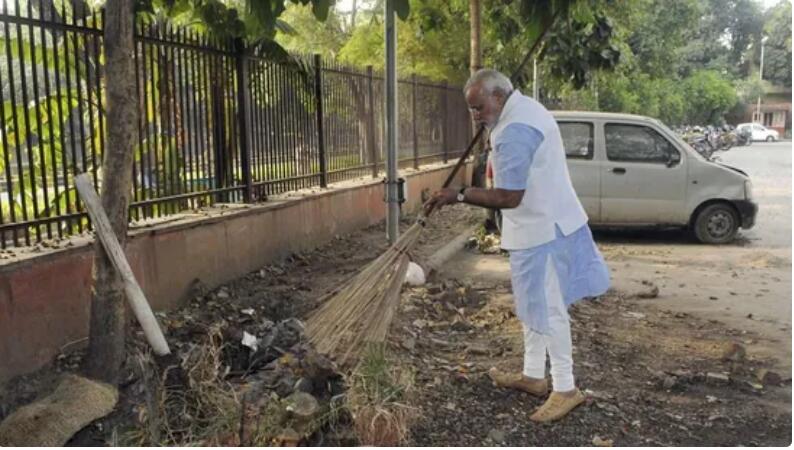Prime Minister Narendra Modi’s Swachh Bharat initiative, which often faces criticism from opposition, is not only saving 60000-70000 lives of infants and children below five years of age annually but also helping people live a better life, a study said.
The nationwide cleanliness drive has increased accessibility to toilets, constructed under the mission, helping people follow comparatively good hygiene, said the study published in the international science journal – Nature.
According to the study, which was conducted by five researchers of international repute, the drive has also led to a drop in poor hygiene related diseases among children.
The mission, which aims to make India an open defecation free country by spreading awareness on the issue and improving solid waste management, was launched by the Prime Minister on October 2, 2014.
The government data shows that over 11 crore toilets have been constructed under the nationwide cleanliness drive.
Modi himself has spoken very highly about the drive on several occasions, asserting that easy access to toilets have changed the life of women in rural parts of the country as they don’t have to go to fields to relieve themselves any more.
“A clean India would be the best tribute India could pay to Mahatma Gandhi on his 150 birth anniversary in 2019,” he had said while inaugurating the campaign.
Improved sanitation conditions have also produced many other positive results across the country. Besides helping in improving public health in general, it has also added various economic benefits for all concerned. Dignity and safety of women is another advantage that the cleanliness drive has ensured.
The gaps in the cleanliness campaign
Meanwhile, even after several international organisations have recognised and appreciated the efforts of the Modi government for initiating such a large scale sanitation drive in the most populous country, there have been certain gaps and shortcomings concerning the mission.
Usage of toilets is still an issue in India as many don’t use it even if it has been provided to them for free. In several villages around the national capital, people could be seen defecating in the fields.
The TFI has found out that people of the older generation in many parts of the country are not in the habit of using toilets, and they, despite having a brand new facility at home, would go out in the open to relieve themselves.
“I have been going out for defecation ever since I was born. I feel uncomfortable doing it at home,” says Rajiv, a farmer based in Baghpat of UP. The TFI correspondent also witnessed newly built toilets being used as mini store rooms by the villagers.
“In my village only a few use the toilets built under the drive. The males generally go out and only women seem to be using them,” Rajiv said, adding that “farmers go out for work in the fields and they find the place more comfortable than the small structures”.
Poor construction and lack of running water have also been identified as some of the causes that discourage people in rural areas from using the facility.
